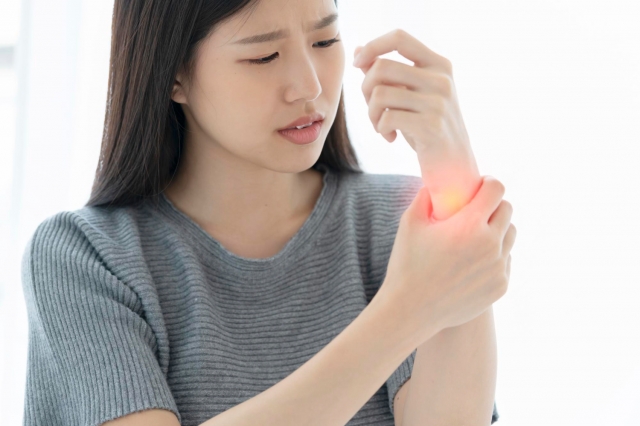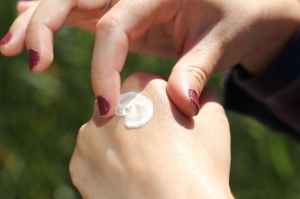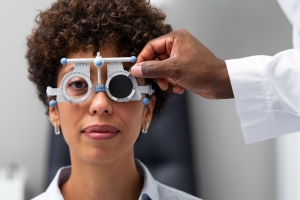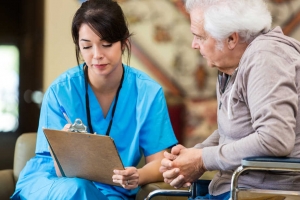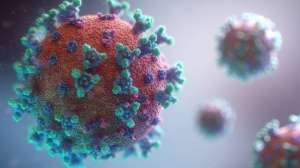Lymphedema is a common condition that’s estimated to affect just over 1 in 1000 people worldwide. It occurs when lymphatic fluid accumulates in tissues, leading to swelling, often in the arms or legs.
This chronic swelling results from lymphatic system problems and can impact daily life. In the UK the primary cause of lymphedema is complications after cancer treatment. Physiotherapy is usually the first line of treatment.
What is Lymphedema?
The lymphatic system is a one-way system that aids in the transport of immune cells. It also regulates the inflammatory response and aids in the dietary absorption of fat. In some patients, the lymphatic system doesn't function correctly resulting in the accumulation of lymph in a limb or part of the body.
This can happen due to congenital abnormalities (primary lymphedema) or as a result of damage from surgery, radiation therapy, infections, or trauma (secondary lymphedema). The main symptom is persistent swelling, often accompanied by a feeling of heaviness or tightness, decreased flexibility, and sometimes pain.
Primary lymphedema has genetic links, is most common in females, and often affects the legs. Secondary lymphedema is more common in general (99% of cases) and typically follows injury or treatment for conditions like cancer. The most common global cause of lymphedema is filariasis, a parasitic infection, prevalent in third-world countries (secondary to roundworm infection). In developed countries, secondary lymphedema often results from breast cancer treatments and can develop up to 30 years post-surgery.
You can find more information from expert physical therapists here: miraclerehabclinic.com/blog/physical-therapy-for-lymphedema
What causes lymphedema?
99% of patients with lymphedema have secondary lymphedema and develop the condition following axillary/inguinal radiation or lymphadenectomy or from a parasitic infection.
Disruption of the lymphatic vasculature results in statis of the protein-rich interstitial fluid and chronic inflammation. These pathological changes over time lead to lymphedema.
As lymphedema progresses it can lead to adipose deposition, tissue fibrosis, recurrent infections and secondary tumors if left untreated.
How do I know if I have lymphedema?
If you suspect you have lymphedema it's important to see a health care practitioner for a proper diagnosis and treatment. Here are some of the main symptoms:
- Swelling: This is the main and most common symptom. The swelling is usually significant and persistent. It Usually occurs in the legs or around the armpit (following breast cancer treatment) but can affect other areas. The swelling is usually unilateral but can be on both sides.
- Redness and Skin Changes: The affected leg is usually red and lumpy with thickening or hardening of the skin.
- Heaviness and Tightness: the affected limb will usually feel heavier and the skin tighter
- Skin Infections: lymphedema increases susceptibility to infections most commonly staph infections/cellulitis
- Pain: Lymphedema is generally uncomfortable and can be painful. This can worsen with prolonged standing or sitting.
What should I do if I have lymphedema?
If you suspect you have lymphedema it's important to see a primary healthcare practitioner. It's wise to see your GP to check for parasitic infection, and complications, and for medication. After the GP it's best to see a physiotherapist to help with a rehabilitation program.
This includes the following. The main guideline for treating lymphedema is complete decongestive therapy (CDT). This is a protocol comprising of Manual lymphatic drainage, compression, exercise, and skin care protocols. Here is a more in-depth look at the treatments available:
Manual Lymphatic Drainage (MLD): Manual Lymphatic drainage is a crucial part of treating lymphedema. In some studies, it was reported that MLD improved drainage of the lymphedema by around 30-38% compared to compression therapy alone.
MDL is a type of massage specifically aimed at reducing swelling. It involves gentle, rhythmic movements to encourage the flow of lymph fluid and adipose away from the affected area.
Compression Therapy: This involves using compression garments such as bandages or sleeves to apply pressure to the affected limb, thus promoting lymphatic fluid movement and reducing swelling. Pneumatic Compression Devices are inflatable devices used to apply pressure on the affected area, this prevents further swelling as well as encouraging fluid back to the lymph node.
Exercise: Exercise is important for improving circulation, strengthening muscles, and maintaining joint flexibility. Exercise improves blood flow to the area and promotes the movement of lymph to help the body recover.
Education and Self-Care: Your physiotherapist will be able to guide you on tips and tricks including self-massage, positioning of garments, skin care, hygiene, and strategies to avoid injury and infection. They’ll also be able to guide you on lifestyle modifications, such as diet and avoiding activities that could exacerbate lymphedema.
Low-level laser therapy: This uses low-intensity laser light to reduce swelling and stimulate the lymphatic system. It's commonly used for reducing pain, inflammation, and edema
K-tape: K-tape has been shown as a simple and effective treatment for swelling. The tape encourages skin movement to reduce swelling. You can have a look on Google Image search for some surprisingly significant results
Surgery: In extreme cases, surgery may be required. This could be lymphatic bypass surgery, to create new pathways for lymph to drain, lymph node transplant of a healthy node from another part of the body liposuction to remove excess adipose tissue and lymph fluid that has built up
Hydrotherapy: the pool is a fantastic environment for lymphedema recovery. Not only does the exercise help but the pressure of the water will aid in the movement of lymph back to the node.
In conclusion, physiotherapy plays a vital part in rehabilitation for lymphedema. Engaging in a physiotherapy program that includes massage, compression and exercise can make a big difference to the speed of recovery and reduce the chances of adipose deposition, fibrosis and risk of infection.
